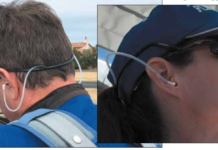Powertow Fan
Since I own three airplanes, I consider Aviation Consumer one of my required publications. I read every issue cover to cover and file many of them for valuable future reference.
I especially enjoyed your June article on hangar tugs. We purchased a Northwest Powertow over 10 years ago. It has been doing yeoman duty since then, pulling the ol Cessna 310 out of, into and around the hangar and ramp. We got the do-it-yourself version, which went together without a hitch. I put in some gas and oil and gave the rope a pull. It lit off on the first tug-no pun intended-and has done so ever since.
In fact, the starting habits of this particular unit have become the source of urban airport legend. It never doesnt start on the first pull-never. Its gotten to the place where when I open the hangar door, the gawkers start to swarm. They have never witnessed anything but a successful light off on the first pull. But, they just keep coming. I have a few standing bets around the airport. The reliability is incredible.
I do normal maintenance and an occasional adjustment. It has run on 100LL sumpings for 10 years. I pull the spark plug every few years, stare at it, then just put it back in. Ive only replaced one part, a cable that was damaged due to what we’ll simply call a brother-in-law-just-trying-to-help situation. I would imagine the other tugs mentioned in the article are just as faithful. Wouldnt it be great if our airplanes were as worry-free as our other hangar equipment?
Larry Denning
Liberty, Missouri
———-
Garden Tractor Tow
Another option for airplane towing (Hangar Tugs, June, 2005) is an old lawn tractor. Unsatisfied with my options for hauling my Saratoga up the slight incline in front of my hangar, I bought a 30-year old John Deere from a hangar neighbor for $200, without the lawnmowing attachment.
He was kind enough to weld an attachment point onto the tractors front for an adjustable towbar, which I bought from Sportys. Lucky for me, the old tractor has been starting and working flawlessly for the six months or so that Ive had it, and my back is much happier. Even if it breaks down, for $200, how can I go wrong?
Brian Peck
Oxford, Connecticut
———-
JPI Data Encoding
I think that for a majority of users, you have understated the issue or maybe Im in the minority. First of all, you have to be fairly serious about engine management to install a $2000 to $4000 instrument.
We can discuss the costs, but Ive done two now, a four-cylinder carbureted Lycoming and a six-cylinder fuel-injected Continental IO-520, which I routinely run lean of peak. The issue is more than meets the eye. Lets assume that an owner downloads and analyzes data after every flight, for several years. Now consider the library of historical information that has been accumulated and is analyzed periodically while searching for trends or to find out when that EGT spiked.
What JPI has done-should I ever need service and as the owner of two units I can guarantee that you will-is now render my library of data useless. This is data was carefully accumulated, protected and treated as the resource it is.
The reason for choosing JPI in the first place was the ability to spot trends via data download. That has now ceased to exist or it will the next time I need service, which seems to be about every 18 months. As a businessperson, their reasoning is baffling to me. Why would a great instrument manufacturer be so concerned about how the data generated from the instrument is analyzed stored and kept? I can only think of one reason: stubborn pride. The reality is that the best maker of engine instruments for GA aircraft has lost sight of their core competency and instead of making more analysis tools available to broaden the demand, it has alienated a set of pilots who will never buy the product again.
Too bad for them and for us.
John Fulton
Rochester, Minnesota
For the record, shortly after our report on JPIs decision to encode data went to press, the company announced that it would waive the $5 charge for converting encoded data to a public domain format.
———-
Correction
In our July issue article about XM and WSI weather, we incorrectly reported that WxWorxs XM-based product doesnt have graphical METARs. Further, the service also includes METARs in raw aviation text. Both WxWorx and WSI use the same NEXRAD resolution, however, when we viewed the two systems side by side, we thought WSIs smoothing of the imagery yielded a nicer display.




